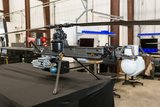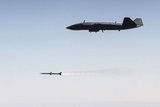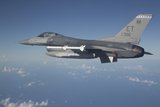Avalon 2025: Australia reimagines Ghost Bat as a proving platform and targets future versions
The RAAF envisions following iterations of UAVs being descendants of MQ-28A Ghost Bat. (Photo: Boeing Defence Australia)
Boeing Defence Australia unveiled what was then referred to as the Loyal Wingman large stealthy uncrewed aerial vehicle (UAV) at the Australian International Airshow in Avalon near Melbourne six years ago. It occurred amid much fanfare and the trumpeting that it would be the first Australian designed military aircraft in more than six decades.
The original idea outlined for the UAV was as a multirole platform which could conceivably act as an escort or attack aircraft and while the US side of Boeing continues to look at it in this role, on the opposite side of the Pacific it is
Already have an account? Log in
Want to keep reading this article?
More from Air Warfare
-
![US approves potential $4.7 billion missile and air defence system sales to Denmark and Italy]()
US approves potential $4.7 billion missile and air defence system sales to Denmark and Italy
Italy could field the JASSM-ER for its combat aircraft including the F-35, while Denmark has been approved for AMRAAM and an Integrated Battle Command system procurement.
-
![Northrop Grumman to fly new Project Talon CCA by late 2026]()
Northrop Grumman to fly new Project Talon CCA by late 2026
The newly unveiled collaborative combat aircraft looks to strike a balance between capability and cost-effectiveness, according to the company.
-
![MBDA and Lockheed move closer to F-35A Meteor flight tests]()
MBDA and Lockheed move closer to F-35A Meteor flight tests
Following the completion of successful ground tests, one more exercise remains before flight testing can begin.





















